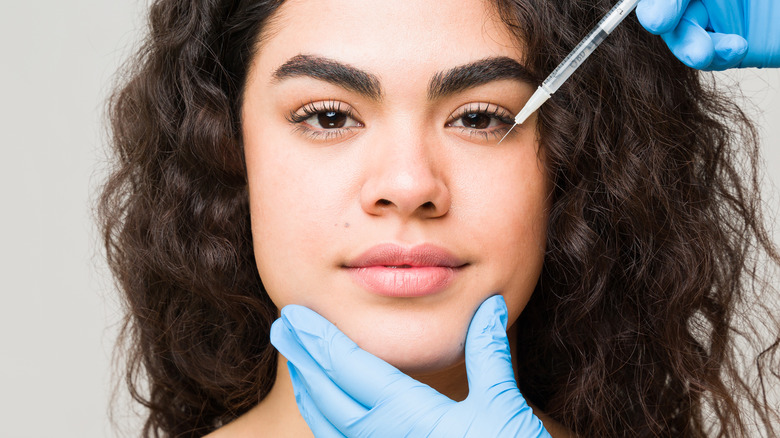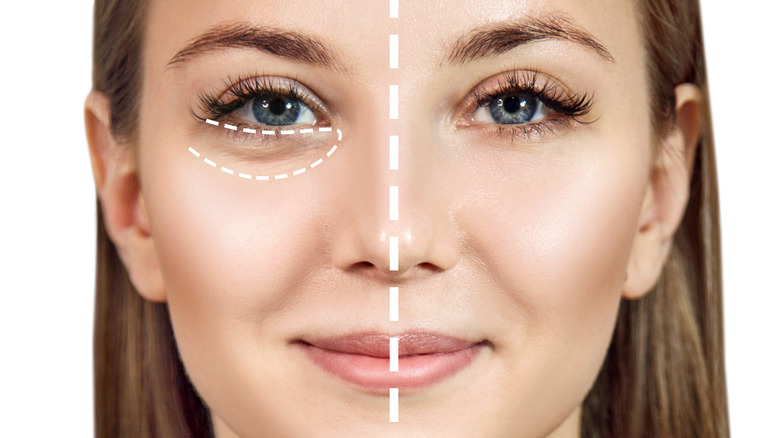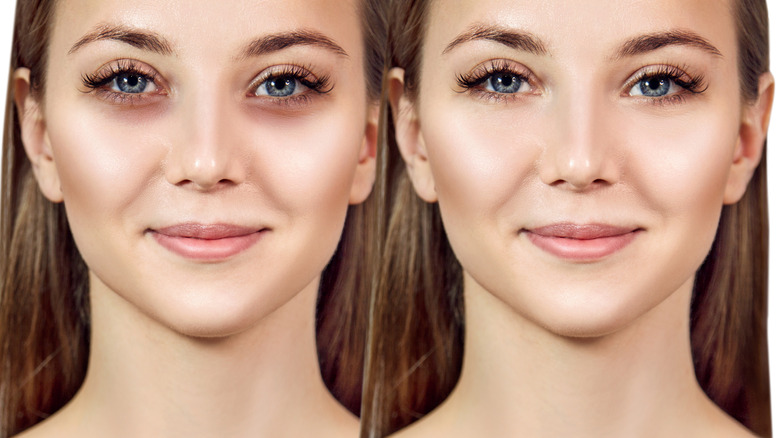Is Under-Eye Filler Reversible?
We may receive a commission on purchases made from links.
As we age, our eye area develops a sunken, hollow appearance punctuated by dark circles, making our eyes appear gloomy and fatigued. There are many ways to re-plump tired-looking eyes, from surgical to non-surgical treatments with minimal downtime. One treatment that stands out in recent years is under-eye filler, a non-surgical treatment designed to add volume to the sunken bags under your eyes, also known as your tear troughs. According to The Skin Culturist, an under-eye filler is an injectable treatment intended to eliminate dark circles beneath your eyes.
Made mostly from hyaluronic acid, a substance naturally produced in the body, an under-eye filler works to stimulate fat pads under the skin to give the under-eye a youthful appearance and remove dark rings shortly after the procedure. The treatment has been enjoying tremendous popularity in many parts of the world. For instance, about 3.4 million under-eye filler procedures were performed in 2020, per the American Society of Plastic Surgeons. Just like any cosmetic procedure, under-eye filler carries certain side effects and risks of complications. It's fair that people wonder if the procedure is reversible just in case they're unsatisfied with their results. To spare you the onerous task of doing your homework, we've rounded up some facts about under-eye fillers so you know what to expect before and after your procedure.
Under-eye filler is reversible
If it's your first time undergoing under-eye filler, most doctors will inject hyaluronic acid-based filler into your under-eye area, says cosmetic nurse Kristina Kitsos (via Glamour). She explains: "Hyaluronic acid is an ideal filler material because it is safe and effective and can be dissolved easily with an enzyme called hyaluronidase." Hyaluronic acid-based filler can be reversed using hyaluronidase, but it will be an aching process and requires more than one session, anesthesiologist Renée Moran remarks. Depending on each person's condition, the amount of dermal filler that goes into the tear troughs also varies. In most circumstances, doctors often employ 0.5 to 1 cc of dermal filler for the tear troughs. After putting you under a local anesthetic, your surgeon will inject the filler into your cheekbone, rim, and your under-eye area.
A procedure costs anywhere from $800 to $1,000 per syringe. "People typically need one syringe under the eyes, but depending on anatomy and the degree of hollowing, people may need two syringes," said Dr. Michele Farber of Schweiger Dermatology Group (via Dermstore). An under-eye filler treatment usually takes 30 minutes, followed by mild bruising and redness that will clear up in one day or two. You will notice full results within one to two weeks, which might serve you from six to 18 months before you need another injection. Most healthcare providers will give you numbing cream for your treatment and schedule a follow-up consultation for two weeks afterward.
Risks and complications
While under-eye fillers are generally safe, it's not without downsides and is not meant for everyone. According to Cosmetic Skin Clinic, a tear-trough filler is not a good idea if you have swollen festoons or malar bags. The mild swelling following every treatment can make your malar bags swell even more. Another thing is that under-eye filler cannot do anything for loose skin or excessive under-eye bags, which might require more invasive treatment such as blepharoplasty for more effective removal. If you want to remove wrinkles or deep-set folds, Botox might be a better choice. An under-eye filler is better suited to those suffering from mild to moderate loss of volume in the tear trough.
If you're a candidate for the procedure, you'll be advised to stop taking some medications and supplements, such as aspirin, vitamin E, ginseng, and ibuprofen to avoid increasing your risk for bruising. This cosmetic procedure also carries risks of complications resulting from a variety of factors, from unqualified surgeons to inaccurate placement or administration of the filler. According to B Clinic, when too much product is used or put in the wrong location, you can expect irregular lumps in the under-eye area, the Tyndall effect characterized by the blueish color in the skin, as well as discoloration in the treated area. To reduce your risks of having a botched under-eye filler treatment, take care to see a qualified plastic surgeon or dermatologist to discuss the most suitable options for your condition.


